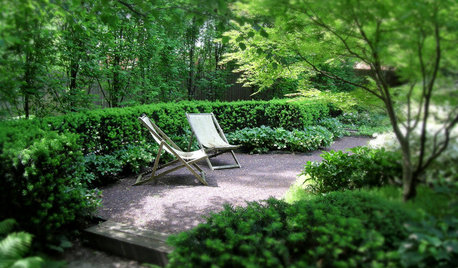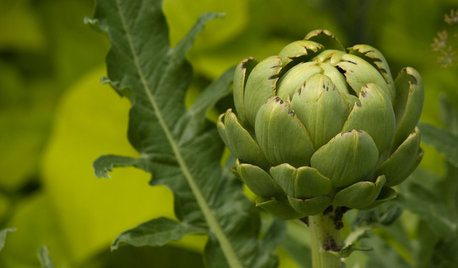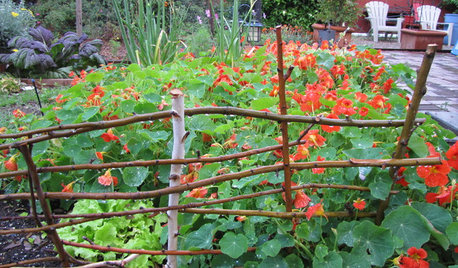Blackberry cuttings
philly_gardener
14 years ago
Related Stories

LANDSCAPE DESIGNDream Spaces: 10 Secluded Garden Nooks
Sometimes dreaminess is a single bench or a romantic table for 2 tucked amid greenery. See for yourself
Full Story
GARDENING GUIDESYour Garden Is Stirring — Here’s What to Do in February
February is a good time to start seeds, shape up shrubs and watch for the earliest blooms. Here’s what to do in your part of the U.S. now
Full Story
GARDENING GUIDESHow to Switch to an Organic Landscape Plan
Ditch the chemicals for a naturally beautiful lawn and garden, using living fertilizers and other nontoxic treatments
Full Story
GROUND COVERSGive Your Lawn a Taste of the Wild
Consider the joys of an irregularly trimmed meadow lawn: It’s ecofriendly, visually interesting and still good for romping
Full Story
GARDENING AND LANDSCAPINGWorld of Design: 10 Home Gardeners Show Us Their Sweet Summer Harvests
From New York to Tokyo, these gardeners have turned their yards, terraces and rooftops into places of bounty
Full Story
GARDENING GUIDES6 Gift-Giving Gardens for Delights Beyond the Visual
Grow your own natural dyes, snip herbs for home brews and more ... these creative gardens have benefits beyond beauty alone
Full Story
FARM YOUR YARDHouzz Call: Home Farmers, Show Us Your Edible Gardens
We want to see where your tomatoes, summer squashes and beautiful berries are growing this summer
Full Story
FALL GARDENING7 Reasons Not to Clean Up Your Fall Garden
Before you pluck and rake, consider wildlife, the health of your plants and your own right to relax
Full Story
GARDENING AND LANDSCAPINGGrow a Lush Privacy Screen
No need to wait forever for patio privacy the green way. These 10 ideas will get your screening up and running in no time
Full Story
LANDSCAPE DESIGNSmall Garden? You Can Still Do Bamboo
Forget luck. Having bamboo that thrives on a wee plot just takes planning, picking the right variety, and keeping runners in check
Full Story






jellyman
philly_gardenerOriginal Author
Related Professionals
Londonderry Landscape Architects & Landscape Designers · Bridgetown Landscape Architects & Landscape Designers · Camas Landscape Architects & Landscape Designers · Horsham Landscape Architects & Landscape Designers · Suffern Landscape Architects & Landscape Designers · Salem Landscape Contractors · Avocado Heights Landscape Contractors · Americus Landscape Contractors · Bainbridge Island Landscape Contractors · Bedford Landscape Contractors · Braintree Landscape Contractors · Cordele Landscape Contractors · Little Ferry Landscape Contractors · North Aurora Landscape Contractors · Raytown Landscape Contractorsglenn_russell
jolj
ardonna
philly_gardenerOriginal Author
larry_gene
roflol
gator_rider2
tcstoehr
gator_rider2
larry_gene
gator_rider2
larry_gene
roflol
gator_rider2
roflol
olpea
larry_gene
gator_rider2
roflol
tn_veggie_gardner
glenn_russell
tn_veggie_gardner
larry_gene
tcstoehr
larry_gene
tcstoehr
erect and thornless